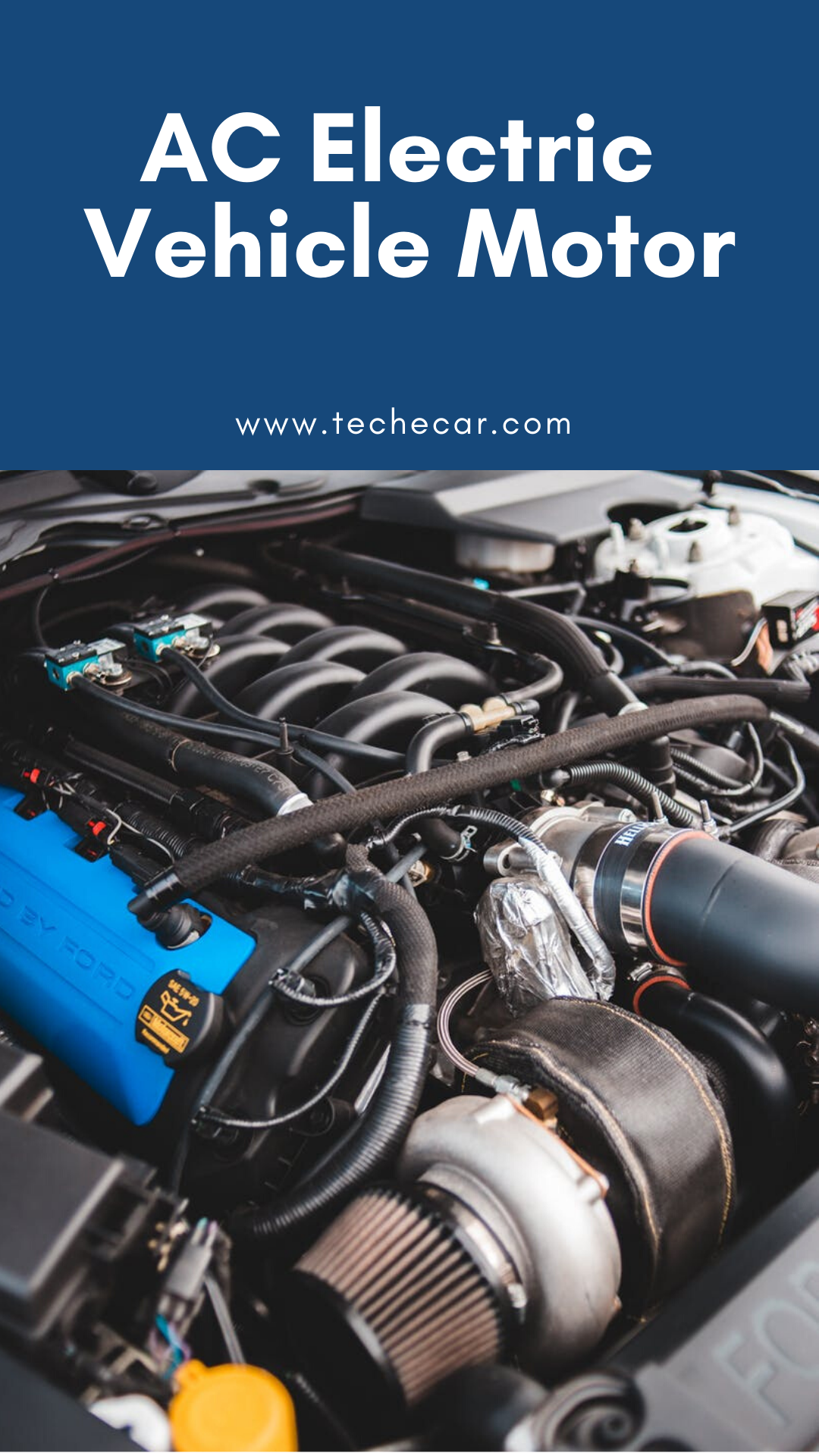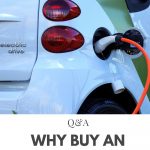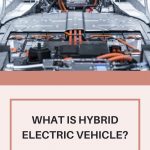AC Electric Vehicle Motor
Topic: AC Electric Vehicle Motor


AC Electric Vehicle Motor
Alternating current (AC)
The phrase alternating current refers to a type of electricity characterised by varying voltage (imagine water pressure in a hose) and current (think the rate of water flow through the hose). When the voltage and current of an alternating current signal vary, they usually follow a sine wave pattern.
Because the waveform is a sine wave, the voltage and current alternate between positive and negative polarity as time passes. The sine wave shape of AC signals is caused by how electricity is generated.
Frequency is another term that may be used while discussing alternating current energy. The signal’s frequency is defined as the number of complete wave cycles completed in one second.
The frequency is measured in Hertz (Hz), and the normal power-line frequency in the United States is 60 Hz. This means that the alternating current signal oscillates at a rate of 60 full back-and-forth cycles per second.
Induction Motor (AC)
The AC induction motor is a three-phase, high-speed motor. It can operate at 240 volts. This car motor is flexible since it contains regenerative capabilities that may also be used as a generator to charge the vehicle’s battery.
Electric cars with AC motors have a stronger grip, especially on bumpy roads, efficiency and performance. They offer higher acceleration and can be utilised for longer and more difficult journeys.
The sole disadvantage of employing an AC motor is that it is more expensive than a DC motor. AC motors remain popular because they are great for high-performance cars and those who frequently plan to use their electric vehicle.
AC MOTORS ARE USED IN ELECTRIC CARS.
Electric vehicles are rapidly gaining popularity as a viable alternative to traditional gasoline-powered automobiles worldwide. Vehicles that run on electricity use a unique automotive technology than those on gasoline. An electric car’s performance relies on its motors and battery pack.
Electric automobiles primarily employ two motors: DC motors and AC motors. Here are two important things to remember regarding electric car motors in general.
Reducing pollutants sent into the environment is perhaps the most significant advantage of employing these motors. Electric motors allow the car to be completely emission-free, which keeps the environment greener. On the other hand, because the battery pack powers these motors, they take a long time to activate, and the car cannot be utilised while the battery is being recharged.
An alternating current (AC) motor is powered by alternating current and is most likely a three-phase motor that can operate at 240 volts AC. The regenerative characteristic of AC motors can also function as a generator, supplying electricity to an electric vehicle’s battery.
Electric cars with AC motors can operate more smoothly on tougher terrains while also providing more acceleration for road performance. Even though AC motors are more expensive than DC motors, they are commonly used by electric car makers, particularly in high-performance vehicles.
The fundamental operation of these motors is based on magnetism principles. An alternating current motor consists of a wire coil, and two fixed magnets encircle a shaft.
When a wire coil is charged with alternating current (AC), it transforms into an electromagnet, producing a magnetic field. When the magnets interact, the shaft and the wire coil begin to rotate, so running the motor. AC motors are classified into two types: asynchronous motors (or induction motors) and synchronous motors (or PM motors).
AC Electric Vehicle Motor
What is the operation of an electric motor?
Because of the topic’s intricacy, the following is a simplified description of how an automobile’s four-pole, three-phase AC induction motor works. It all starts with the car’s battery, linked to the motor.
The stator receives electrical energy from the car’s battery. The coils (made of conducting wire) within the stator are positioned on opposite sides of the stator core and operate as magnets in some ways.
As a result, when the motor receives power from the car battery, the coils generate rotating magnetic fields that pull the conducting rods on the outside of the rotor along behind it.
The spinning rotor generates the mechanical energy required to operate the car’s gears, rotating the tyres. In a conventional, non-electric car, there is both an engine and an alternator.
The engine is powered by a battery, which also powers the gears and wheels. The motion of the wheels then powers the alternator in the car, which subsequently recharges the battery.
This is why you’re instructed to drive your car around for a while after being jumped: the battery has to be recharged to function properly. An electric vehicle does not have an alternator.
So, how exactly does the battery recharge? While there is no separate alternator in an electric vehicle, the motor serves as both the motor and the alternator.
The voltage of electric motors
This is due to the AC signal’s alternating nature, allowing the voltage to be readily stepped up or stepped down to different values. That is one of the characteristics that distinguishes electric vehicles.
The battery, as previously said, activates the motor, which delivers energy to the gears, which rotate the tyres. The rotor is dragged along by the rotating magnetic field when you press the accelerator, necessitating more torque.
But what happens if you let up on the gas pedal?
When you take your foot off the accelerator, the revolving magnetic field stops, and the rotor begins to spin faster (instead of being pulled along by the magnetic field). When the rotor spins faster than the rotating magnetic field in the stator, it recharges the battery and functions as an alternator.
Direct current vs alternating current
The conceptual distinctions between these two types of currents should be evident; one (DC) is consistent, while the other (AC) is more sporadic. However, things are a little more complicated than that basic explanation, so let’s go through these two concepts in further depth.
Alternating current (DC)
The term “continuous current” refers to an electric flow that is steady and unidirectional. Furthermore, the voltage maintains polarity throughout time. The positive and negative poles of batteries are indicated.
The constant potential difference generates a current that constantly flows in the same direction. In addition to batteries, fuel cells, and solar cells, direct current can be generated by sliding particular materials.
Alternating current (AC)
In electrical terminology, “alternating current” refers to a form of electricity with variable voltage and current (think the water flow rate through the hose).
An alternating-current signal’s voltage and current often change in a sine wave pattern. Voltage and current fluctuate between positive and negative polarity as time passes because the waveform is a sine wave. Because of how electricity is created, AC signals have a sine-wave-like structure.
When addressing alternating current energy, frequency is another term that can be utilised. The number of complete wave cycles completed in a second defines the signal’s frequency.
The frequency is expressed in Hertz (Hz), and in the United States, the standard power line frequency is 60 Hz. So, the alternating current signal goes through 60 full back-and-forth cycles in a second.
What is the significance of this?
AC electricity is the most efficient transfer of usable energy from a generation source (such as a dam or windmill) over long distances. This is due to the AC signal’s alternating nature, allowing the voltage to be readily stepped up or stepped down to different values.
This is why your home’s outlets will say 120 volts AC (safe for human consumption). Still, the voltage of a distribution transformer (those cylindrical grey boxes you see on power line poles) that supplies power to a neighbourhood (those cylindrical grey boxes you see on power line poles) may be as high as 66 kVA (66,000 volts AC).
AC power enables us to build significantly more efficient generators, motors, and distribution systems from electricity than direct current, which is why AC is the most used energy current for powering applications.
People Also Ask:
Why AC motor is used in electric cars?
Electric cars with AC motors have a stronger grip, especially on bumpy roads, efficiency and performance. They offer higher acceleration and can be utilised for longer and more difficult journeys. The sole disadvantage of employing an AC motor is that it is more expensive than a DC motor.
Are Tesla motors AC?
Tesla’s revolutionary alternating current motor system is still employed in most electric motors today. His alternating current (AC) system is still the most widely used way for producing, transmitting, distributing, and utilising electrical energy. The only thing that has changed is the power of generators.
Recommended Articles:





